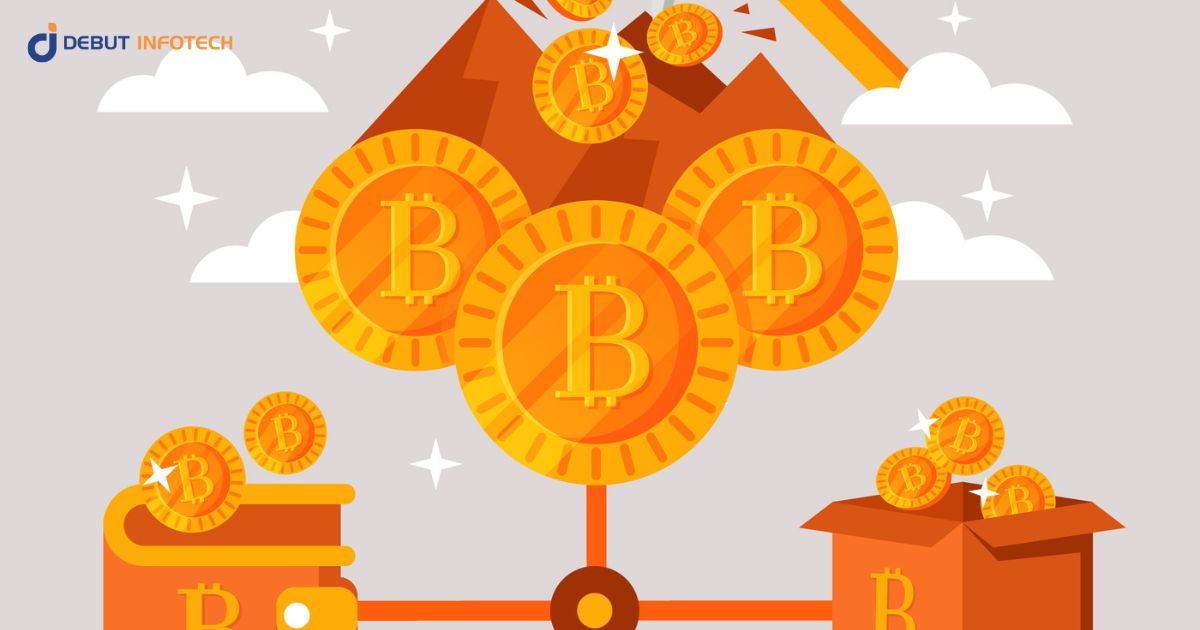Introduction
Cryptocurrency has revolutionized the financial world, offering a decentralized and secure method of transaction. Among the various platforms available for trading cryptocurrencies, P2P (Peer-to-Peer) crypto exchanges have gained significant popularity. But what exactly is a P2P crypto exchange development, and why is it essential in today's digital economy? Let’s dive in!
What is a P2P Crypto Exchange?
A P2P crypto exchange is a decentralized platform that allows users to trade cryptocurrencies directly with each other without the need for an intermediary or central authority. Unlike traditional centralized exchanges, where a third party controls the transactions, P2P exchanges enable direct interaction between buyers and sellers. This direct interaction is facilitated by smart contracts and an escrow system, ensuring secure and transparent transactions.
Advantages of P2P Crypto Exchanges
- Enhanced Security
One of the primary benefits of P2P exchanges is enhanced security. Since transactions occur directly between users, the risk of hacking is significantly reduced. Additionally, these platforms often employ advanced encryption techniques to safeguard user data.
- Lower Transaction Fees
P2P exchanges generally have lower transaction fees compared to centralized exchanges. This is because there are no intermediaries involved in the transaction process, leading to reduced operational costs.
- Decentralization and Privacy
Decentralization is a core principle of cryptocurrencies, and P2P exchanges embody this principle. These exchanges do not rely on a central authority, providing users with greater control over their assets and transactions. Moreover, P2P exchanges prioritize user privacy, often requiring minimal personal information for account creation and trading.
Key Features of a P2P Crypto Exchange
User Authentication and Verification
To ensure the security and integrity of the platform, P2P exchanges implement robust user authentication and verification processes. This includes email verification, two-factor authentication (2FA), and Know Your Customer (KYC) procedures.
Multi-Currency Support
A successful P2P exchange supports multiple cryptocurrencies, allowing users to trade various digital assets on a single platform. This feature enhances the platform's versatility and attracts a broader user base.
Escrow System
The escrow system is a crucial feature of P2P exchanges, providing an added layer of security for transactions. It holds the seller's cryptocurrency in escrow until the buyer confirms receipt of the funds, ensuring that both parties fulfill their obligations.
Dispute Resolution Mechanism
In case of disagreements or issues during a transaction, a reliable dispute resolution mechanism is essential. This feature helps resolve conflicts between buyers and sellers, maintaining the platform's trustworthiness and user satisfaction.
User-Friendly Interface
An intuitive and user-friendly interface is vital for attracting and retaining users. A well-designed P2P exchange should offer easy navigation, clear instructions, and responsive customer support to enhance the user experience.
Understanding the P2P Exchange Architecture
- Frontend and Backend Components
The front end of a P2P exchange includes the user interface and experience, while the back end comprises the server, database, and application logic. Both components must be seamlessly integrated to ensure smooth functionality.
- Database Management
Efficient database management is crucial for storing user information, transaction records, and other critical data securely. The database should be scalable and capable of handling large volumes of transactions.
- Blockchain Integration
Integrating blockchain technology is fundamental to the operation of a P2P exchange. Blockchain ensures transparency, security, and immutability of transactions, aligning with the core principles of decentralized finance.
Steps to Develop a P2P Crypto Exchange
Choosing the Right Technology Stack
Selecting the appropriate technology stack is critical for the platform's performance and scalability. This includes choosing suitable programming languages, frameworks, and blockchain platforms.
Designing the User Interface
A well-designed user interface (UI) is crucial for attracting and retaining users. The UI should be intuitive, responsive, and visually appealing to provide a seamless user experience.
Developing Core Functionalities
Developing the core functionalities, such as user registration, wallet integration, trading mechanisms, and escrow services, is the next step. These features form the backbone of the P2P exchange.
Implementing Security Measures
Security is paramount in crypto exchange development. Implementing robust security measures, such as end-to-end encryption, two-factor authentication, and regular security audits, is essential to protect user data and assets.
Market Research and Planning
Before embarking on development, conducting thorough market research and planning is essential. This includes analyzing competitors, understanding user needs, and identifying regulatory requirements. For insights on cryptocurrency derivatives exchange platforms, refer to this detailed guide.
Technology Stack for P2P Crypto Exchange Development
- Programming Languages
Commonly used programming languages for P2P crypto exchange development include Python, JavaScript, and Ruby. These languages offer flexibility and scalability for building robust platforms.
- Frameworks and Libraries
Frameworks like React and Angular are popular choices for frontend development, while Node.js and Django are often used for backend development. These frameworks provide the necessary tools for building dynamic and responsive platforms.
- Blockchain Platforms
Choosing the right blockchain platform is crucial for the success of a P2P exchange. Ethereum, Binance Smart Chain, and Polkadot are some of the widely used platforms, offering smart contract capabilities and high transaction throughput.
Challenges in P2P Crypto Exchange Development
- Security Threats
Developing a secure P2P exchange requires addressing various security threats, such as hacking, phishing, and fraud. Implementing advanced security measures is essential to mitigate these risks.
- Regulatory Hurdles
Navigating the complex regulatory landscape can be challenging. P2P exchanges must stay updated with evolving regulations and ensure compliance to avoid legal issues.
- User Trust and Adoption
Building user trust and achieving widespread adoption is critical for the success of a P2P exchange. Providing a secure, transparent, and user-friendly platform helps attract and retain users.
Future Trends in P2P Crypto Exchanges
Integration with DeFi (Decentralized Finance)
The integration of P2P exchanges with DeFi platforms is a growing trend. This integration offers users access to a broader range of financial services, such as lending, borrowing, and staking.
Enhanced User Experience
Improving the user experience is a key focus for P2P exchanges. This includes developing more intuitive interfaces, faster transaction processing, and enhanced customer support.
Cross-Chain Compatibility
Cross-chain compatibility is becoming increasingly important in the crypto space. P2P exchanges that support cross-chain transactions can offer users greater flexibility and access to a wider range of digital assets.
Conclusion
P2P crypto exchanges have emerged as a vital component of the cryptocurrency ecosystem, offering secure, decentralized, and cost-effective trading solutions. As the demand for these platforms grows, developers must focus on enhancing security, compliance, and user experience to stay competitive. The future of P2P exchanges looks promising, with trends like DeFi integration and cross-chain compatibility set to drive innovation and adoption.
FAQs
1. What is the difference between a P2P exchange and a centralized exchange?
A P2P exchange allows direct transactions between users without an intermediary, while a centralized exchange involves a third party that facilitates and oversees the transactions.
2. How do P2P exchanges ensure security?
P2P exchanges use advanced security measures like end-to-end encryption, two-factor authentication, and escrow systems to protect user data and assets.
3. What are the costs associated with developing a P2P crypto exchange?
The costs can vary depending on factors like technology stack, security measures, and regulatory compliance. Generally, developing a P2P exchange requires a significant investment in software development, security infrastructure, and legal consultations.
4. Can P2P exchanges handle large transaction volumes?
Yes, with the right architecture and scalability measures, P2P exchanges can handle large transaction volumes efficiently.






Comments